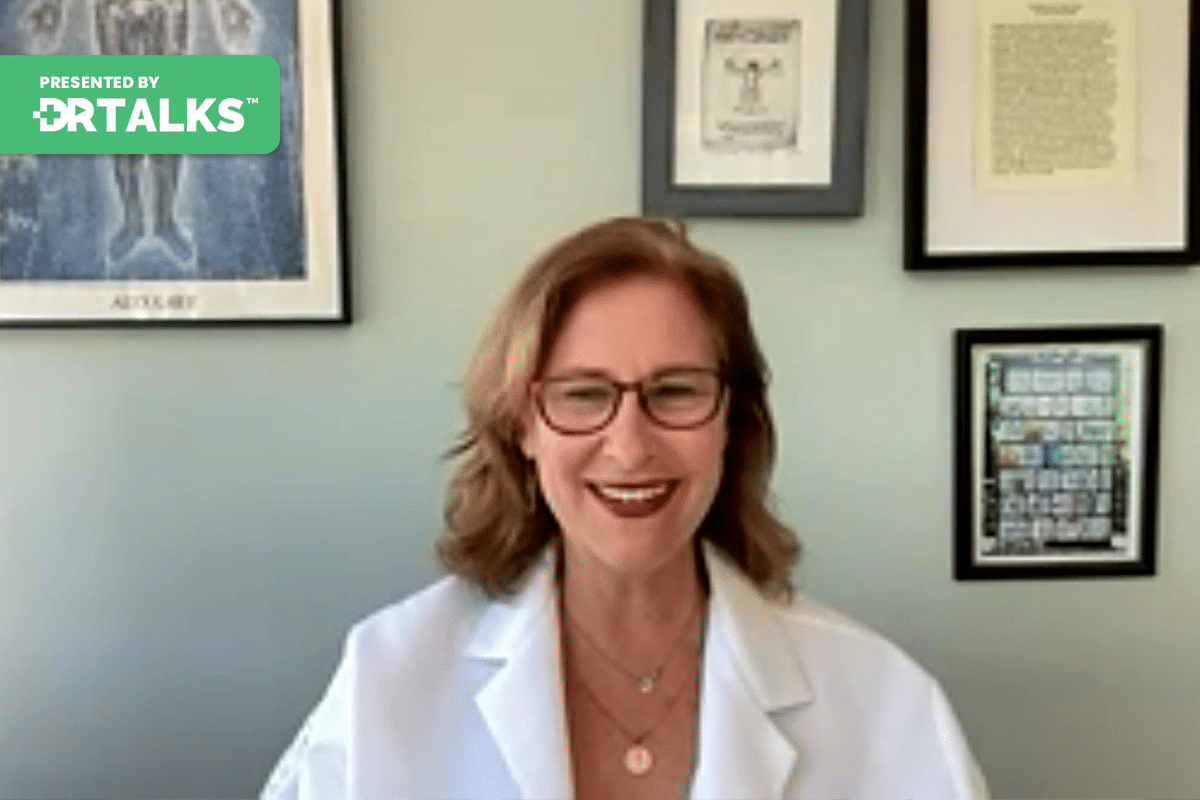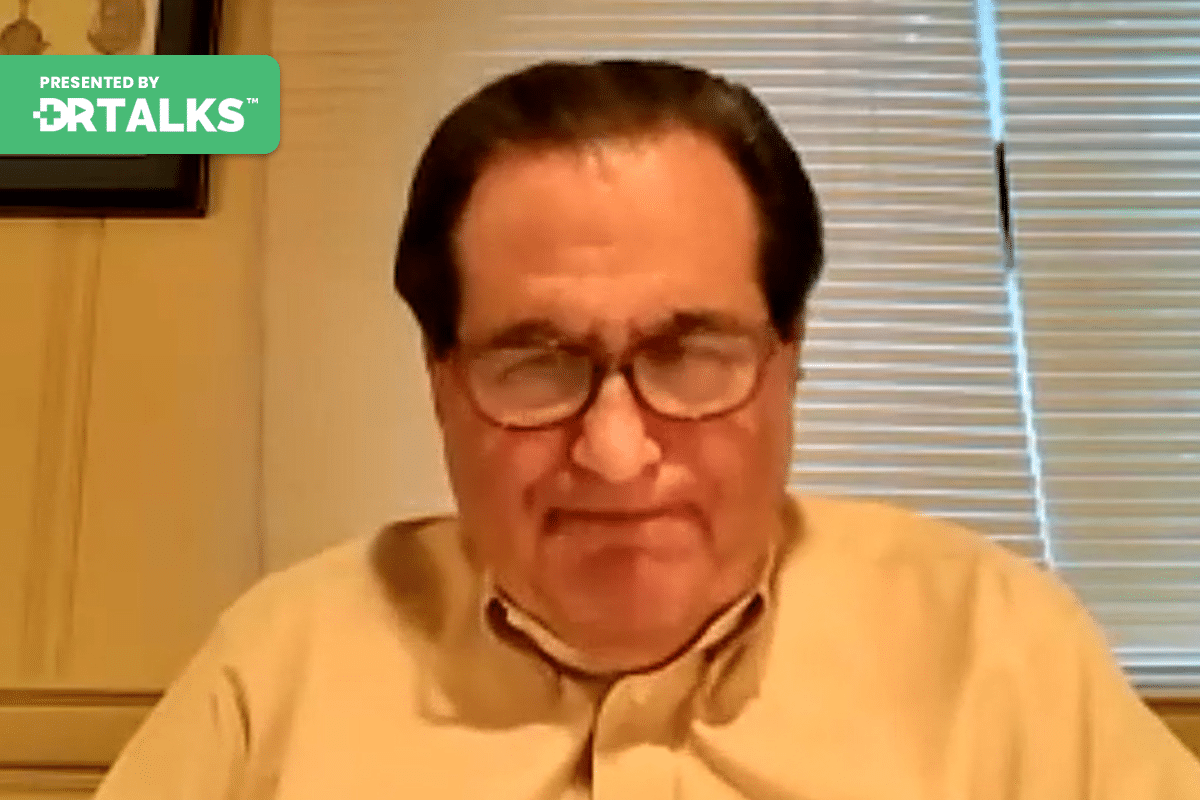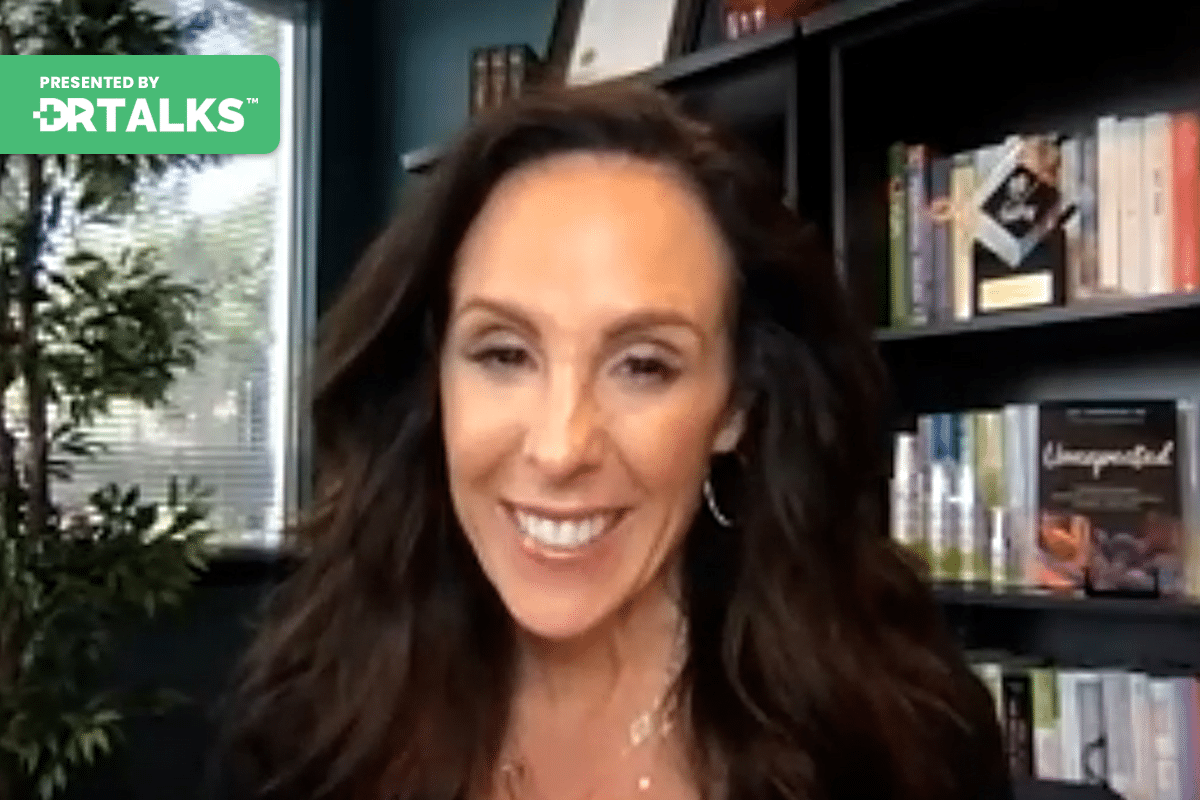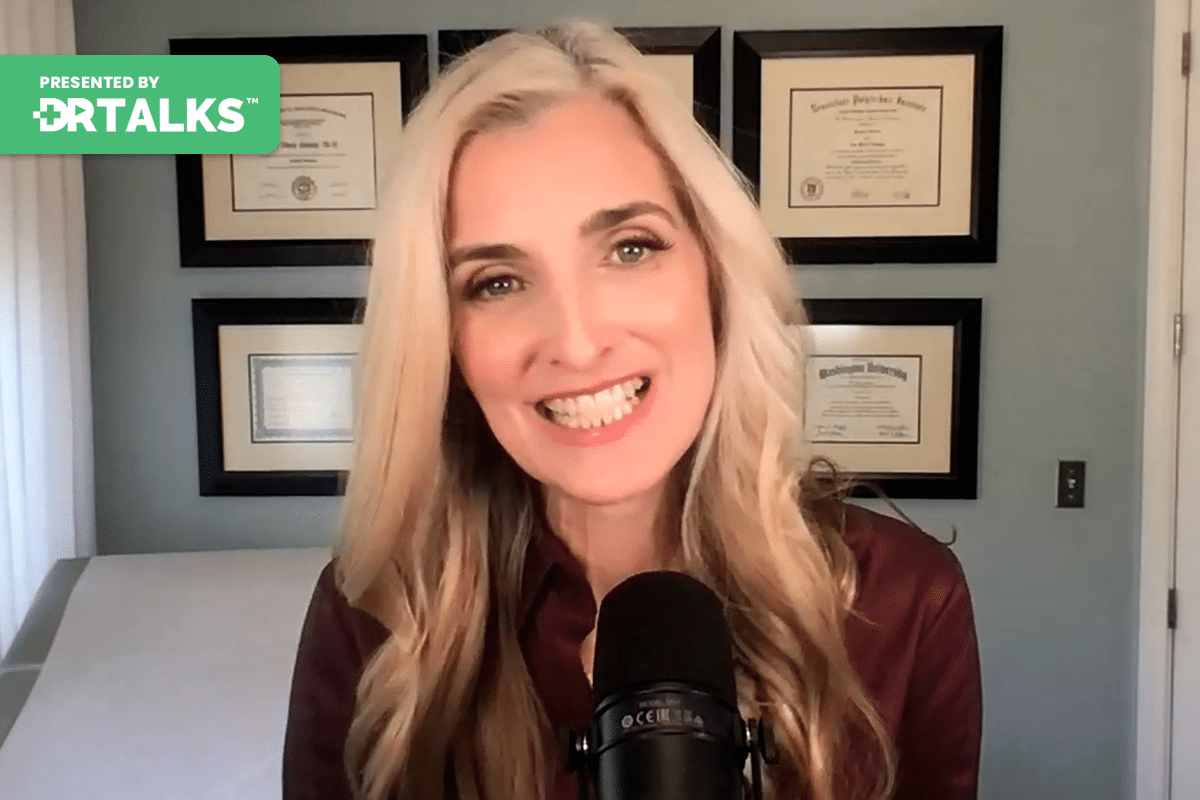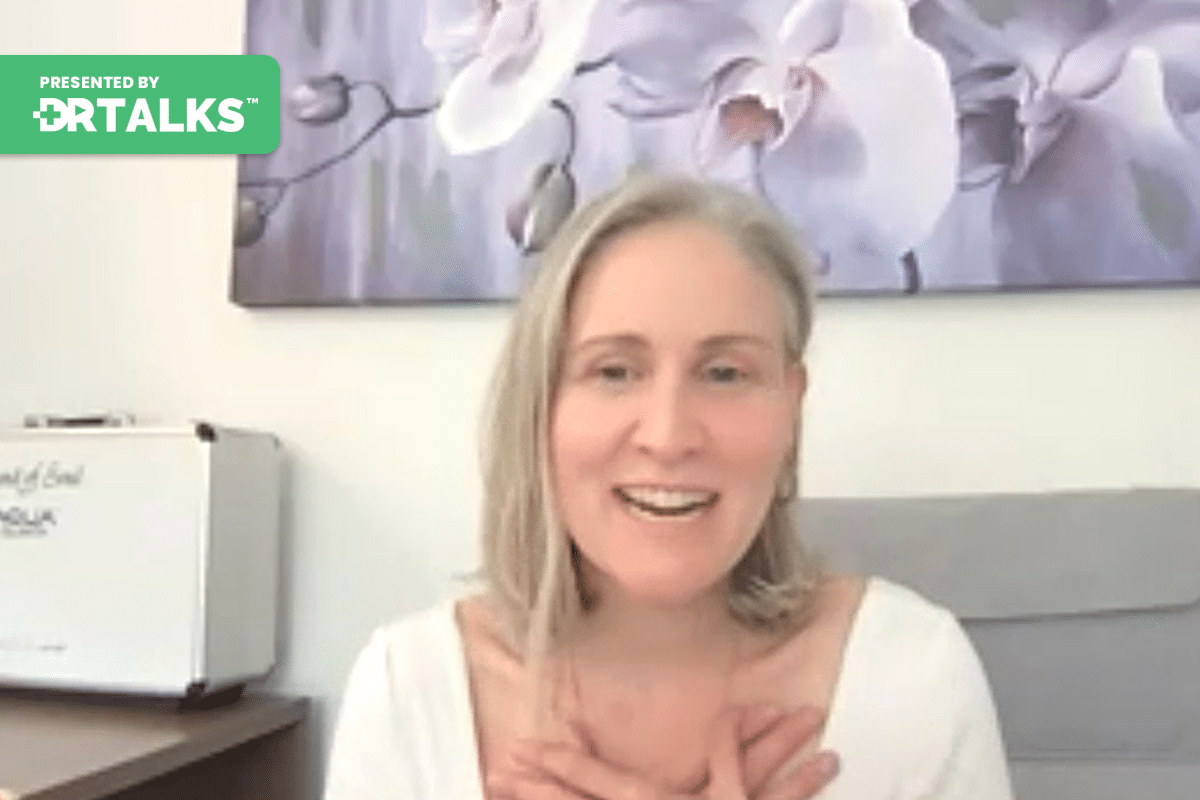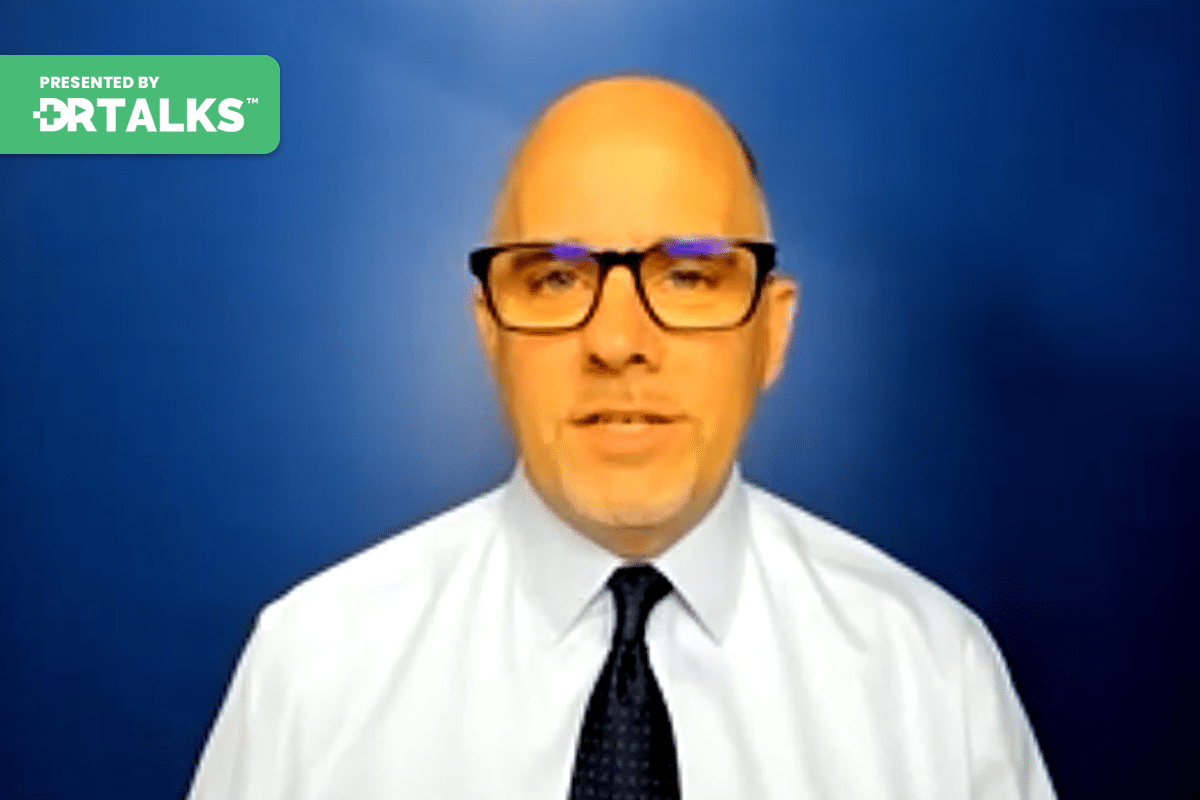Join the discussion below

Dr. Ann Shippy is Board Certified in Internal Medicine and Certified in Functional Medicine. She operates a successful private practice in Austin, TX where she is known for her compassionate, attentive, and tireless approach to caring for her patients. She has gained a considerable reputation for successfully diagnosing and treating... Read More

An Institute for Functional Medicine faculty member for 14 years, Dr. Christensen first became interested in functional medicine 20 years ago when trying to solve the riddle of her and her family’s complex health challenges -- unbeknownst to her at the time they were consequences of severe toxic mold exposure.... Read More
- Understand the intersection of environmental toxins and hormones, and how these toxins impact hormone production and processing
- Learn about common hormone imbalances like infertility, PCOS, endometriosis, and early menopause
- Learn simple strategies to maintain hormonal balance, including diet, sleep, and gut health
- This video is part of the Mold, Mycotoxin, and Chronic Illness Summit
Related Topics
Anxiety, Autoimmune Issues, Blood Pressure Issues, Blood Sugar Levels, Brain Fog, C-reactive Protein, Cell Membranes, Chronic Fatigue, Cortisol Levels, Depression, Endometriosis, Environmental Toxins, Erectile Dysfunction, Estrogen, Fasting Insulin Levels, Ferritin, Fibroids, Gut Health, Heavy Bleeding, Hormonal Imbalances, Hot Flashes, Insulin Levels, Kidney Function, Laboratories, Liver Enzymes, Liver Function, Memory, Mitochondria, Mold Disruption, Mood Swings, Neurotransmitters, PCOS Symptoms, Receptors On Cells, Sleep Disturbances, Stress Hormones, Sweats, Testosterone, Thyroid Hormone, Weight GainAnn Shippy, MD
Welcome to this episode of the Mold, Mycotoxin, and Chronic Illness Summit. I’m your host, Dr. Ann Shippy. Today we get to speak with Dr. Margaret Christensen. She’s a board-certified OB-GYN. She’s on the faculty of the Institute for Functional Medicine, and she’s the founder of Carpathia Collaborative in Dallas, Texas. Today, we’re going to dive into how environmental toxins, including mold, affect hormones. Welcome so much. We’ve been dear friends for such a long time. Thanks for joining us.
Margaret Christensen, MD
Happy to be here. Dr. Ann.
Ann Shippy, MD
Let’s focus on environmental impacts, especially mold on hormones. I know you give such a beautiful perspective on how we make hormones and what they are. If you want to give an overview, you said that’s what we talk about.
Margaret Christensen, MD
That would be great. Yeah. When I am thinking about hormonal imbalances, from a functional perspective, I am thinking about how that hormone is made, where in the body it is made, and what the signals are telling it to be made. How is it utilized in the body? That’s what we would call the receptors on the cell that says, “Yes, I have this hormone.” For example, the thyroid hormone sits on a receptor and helps to turn on the mitochondria in the body and get your energy. How is it made? How is it utilized? And how is it broken down and processed through the liver, kidneys, or anything else? How does your body get it out of you? We can see issues with hormonal disturbances anywhere along that pathway. Unfortunately, so many different environmental toxins have major hormonal impacts, even in very tiny quantities. Mold in particular has had issues with acting like hormone disruption. The other thing that is important to understand is that all the different hormones work together. When I’m evaluating somebody who’s coming in for whatever reason, thinking they have a hormonal imbalance, I’m not just looking at, for example, their estrogen, progesterone, and testosterone levels.
We’re also looking at your cortisol levels and your stress hormone levels. When we teach functional medicine, we talk about how we have to start with the adrenal glands; we start with the stress hormones because they are impacting everything else. They were also wanting to look at insulin and blood sugar levels because insulin has a profound impact on how hormones are processed in the body and utilized, as well as weight gain and things like that. Then thyroid hormone, which I already mentioned a little bit. Thyroid hormone is very involved in this whole intricate dance. For example, if you have very high levels of cortisol, one of the things that happens is that it impacts your ability to turn the inactive form of the thyroid, called T, into the active form, called T3. That’s one of the things that if you have high cortisol levels, a big mistake that I see in a lot of them is that they’re checking free T3, and I’ll mention that a little bit later, giving people T3 because their T3 levels are low, but they have very high stress hormone levels, and that’s like putting your feet on the gas pedal for some folks.
You want to be careful. When I’m testing, I’m looking at all of them and understanding how they all interact with one another, and that’s kind of the big picture. Then you can also throw neurotransmitters in there. They are also signaling. Things like serotonin, dopamine, norepinephrine, and GABA are neurotransmitters, but they can also very much affect our hormonal production and metabolism. With a lot of anxiety, depression, high stress, and different medications. All of that can impact how hormones work. When you’re having a hormonal imbalance, you want to look at the big picture of how they all dance together.
Ann Shippy, MD
I can imagine when you’re doing your work on your patients that you do a pretty broad sweep of all these different hormones. I would love it if you just kind of ran down a list or talked about how you like to measure them to get that big picture.
Margaret Christensen, MD
I’ll do that in a second. Let me just kind of talk about some bigger-picture issues. We talked about production utilization. We use it in functional medicine. We use the PTSD metaphor, which is production and transport sensitivity; that’s the cell receptor. then the elimination. How do you degrade, discard, or whatever? I can’t remember what the D stands for now, but so remember that the signals for hormonal production come from the brain, and they come from the hypothalamus, which is a master regulatory center of the brain, and they go down to the pituitary gland, and then the signals go down to the ovaries to say, “Hey, make some estrogen, it’s time to ovulate, make some progesterone, make some testosterone,” or you get a distress signal coming from the pituitary gland, from the hypothalamus to the pituitary to your adrenal glands and say, “Hey, run, fight or freeze, or I’m hungry and I want some, raise my blood sugar.” We were taught the hypothalamic pituitary adrenal axis. The HPA axis is what we were taught in medical school. But what we know from a functional perspective is that the hypothalamic pituitary adrenal gut is so important to get: a gonadal immune system.
The immune system is directly tied to the hormonal imbalances that are going on in our body and can flare up with that. That’s some of the production pieces, and then how is it again utilized and metabolized in the body? You have to have healthy cell membranes and healthy mitochondria; that’s what produces all the energy in our body, and for the hormones to signal on the receptors, “Hey, I’m here, I’m working. Knock, knock on the thyroid. Let me in. Let me turn on your mitochondria. Give you some energy,” or “Hey, I’m some testosterone; I’m going to give you some libido and help build your muscles,” that’s the receptor on the cell membrane. If you have damaged cell membranes or damaged mitochondria that are not receiving the signals appropriately, that can be a problem. The metabolism or excretion of the used-up hormones in the body first comes through the liver, and there are specific enzymes that are involved in that. If, genetically, you need a lot more of a certain nutrient to make those enzymes work, or, for example, I’m glutathione PTSM deficient,
I have some genetics where I need a lot of extra antioxidants to get rid of any toxins, including hormones. These kinds of hormones are treated along some of the toxic pathways. We have to have everything. All the detoxing mechanisms must work correctly to get it. We go into the gut. A lot of people don’t realize that this is where the major metabolism of hormones is going on. If you have a lot of dysbiosis or unhealthy bacteria or yeast or fungal overgrowth because you’ve been on a lot of antibiotics or you’re eating the standard American diet, all of those things can impact your guts’ ability to process the hormones, and you may end up recirculating them, so something that’s already been used up, like estrogen, gets broken down by bad bacteria by something called β-glucuronidase and is recirculated in the body. Those are all the main ways we, again, produce, metabolize, utilize, and then get rid of the hormones. Anywhere along those pathways, you can have hormonal disruption.
Ann Shippy, MD
A great overview. All that interconnectedness is so important for people to realize. If you’ve got something going on with your hormones, it’s not just mandating the hormones at something like age 30; it’s super important to work on these other areas: the cell membranes, the mitochondria, and the gut health. All of these things are so important. I can’t wait to dive into some of these things with you some more. But let’s go next to, like, what are the symptoms like when people are having these hormone imbalances that are tipped over by mold and other toxins? What are all those stirrings?
Margaret Christensen, MD
We can see the entire range of issues from PCOS symptoms, as that is a polycystic ovarian syndrome with ragged, erratic, irregular periods. You can have endometriosis; you can have super heavy bleeding; you may have fibroids; you may have bad mood swings; maybe you have hot flashes and sweats. Your sleep disturbances are a big one because weight gain is a big one. Oftentimes a big one with mold, toxic mold, because I know we’re going to talk a little bit about that. Those are probably the most common ones that we see. Also impacting things like anxiety and depression, things like brain fog and memory, estrogen, and testosterone are important post-menopausal to help keep our brains working. Anything along those lines, and if you’re a man, then things like erectile dysfunction and blood pressure issues are things that men tend to have more of the cardiovascular side of things than we see in women, particularly if we’re talking toxic mold. They also have a lot of irritability and brain something, but they don’t tend to get the same type of things like chronic fatigue and autoimmune issues that women do. They still can. But they often present a little bit differently in men for a lot of reasons. They are a little bit more protected because of their testosterone from some of the side effects that we see, for example, with mold exposures.
Ann Shippy, MD
Oh, this might be a great time to just talk about some of the labs that you think are important. I think so many times people just get the diagnosis: you have PCOS or you’re menopausal. And now no work is being done to look at the whole picture or get to the root cause. Because even having menopausal symptoms is not normal.
Margaret Christensen, MD
I get a complete panel that includes kidney and liver function. But we are also always measuring fasting insulin levels, markers for inflammation like C-reactive protein, and ferritin, which is an iron storage level. I have to say that since COVID, particularly with post-vaccine issues, we have seen bizarre iron studies and ferritin, inflammation, and autoimmunity being re-triggered. It’s spike protein. It doesn’t matter where that spike protein came from, but you’re more likely to have issues if you had the treatment that was the theoretical prevention that didn’t prevent a damn thing. We’re seeing so many issues there, so I get this full panel, and then I’m getting a complete thyroid panel, TSA, free T3, free T4, thyroid antibodies, reverse T3 as part of it, and then estrogen, progesterone, testosterone level, sex hormone binding globulin, DHEA, insulin, and hemoglobin, A1C. I have people do an adrenal stress index by looking at their cortisol levels. You can also do hormone metabolites. There are several different companies out there that do it. You can see which pathways they are going down. The good pathways or the not-so-great pathways
Ann Shippy, MD
Are important to look at. Do you have a favorite company for that?
Margaret Christensen, MD
I use Humap. We use that. We use ZRT. I’ve used all those companies. Some are less expensive than others. It’s not necessary for everybody. I pretty much reserve most of those for perimenopausal postmenopausal women to figure out which, when I’m getting hormone replacement therapy, pathways are going down or if they have concerns. Yes, if they have concerns.
Ann Shippy, MD
Where is the site to get it done?
Margaret Christensen, MD
Yes. Follow up to see how your body utilizes these hormones, and if you’re doing fertility workups, they can be useful as well to see what’s going on. Those are just the basics that I do. But then you’re looking for a good history and then testing it. How many antibiotics have you taken in your lifetime? How many infections have you had? Because all of them can cause yeast and fungal overgrowth, fungi are in the same category as molds, and they can produce mycotoxins themselves. That’s always the question. We can use stool testing. I do use a lot of organic acid testing, things like the Nutreval or TPO test because we can see markers for how well your mitochondria are doing. Do you have markers for yeast, fungal overgrowth, dysbiosis, or unhealthy bacteria in the gut? Sometimes we can also use stool testing again to figure out, Okay, what’s going on?
Do you have high levels of β-glucuronidase in your stool? How much leaky gut do you have, etc.? Part of this is guided by what’s going on with your symptomatology. The two top things that I go after with people who have environmental toxicity, particularly mold toxicity: Are you sleeping? Are you pooping? I try to fix those two things first, if I can and then go on to deal with the rest of them. Then you have to think about chronic infections, and I’m sure you have somebody talking about this, but when you have toxic mold exposures, oftentimes the molds and the mycotoxins themselves suppress the immune system. They suppress our ability to fight off infections. So then you get more sinus infections, bladder infections, gastrointestinal things, food poisoning, etc. What are you getting for those? Antibiotics. What do antibiotics do while they disrupt the gut microbiome and the gut flora? That disrupts your ability to metabolize the hormones, and so your immune system is suppressed.
You get another infection. We see this all the time with recurrent sinus infections, recurrent upper respiratory infections, strep throat, etc. If you have recurrent sinus infections or strep throat, if you’ve got kids in your house or even young adults, I just saw a gal today who had her tonsils out when she was in college. Where was the mold in that moldy dorm room that was giving you so many strep throats that you ended up having a tonsillectomy at 22? That’s kind of the big picture of what I look for. Then you want to look at chronic infections, like viral infections. The Epstein-Barr virus is just huge. Humongous. Right now, we’re seeing a lot of reactivation. Epstein-Barr host spike is just called spike protein with young syndrome. No matter where that spike protein is from, unfortunately, you’re much more likely to have gotten much higher doses of it with poor treatment prevention. Having had a natural infection. We’re seeing the fallout from that tremendously.
Ann Shippy, MD
Which other chronic infections are you seeing?
Margaret Christensen, MD
Well, and then again, where there’s Lyme, there’s mold, so a lot of folks come to us, and they say, “Well, I was treated for Lyme infections for X number of years. I took antibiotics, but nobody checked them to see if they had mold first.” We want to treat mold first before we treat chronic infections because when you start pulling out the mycotoxins and improving the quality of your immune system, the infections oftentimes start taking care of themselves.
Ann Shippy, MD
It is such a relief that you don’t have to use antibiotics. Let’s come back to these simple things a little bit more. Because they end up being so critical as far as laying the foundation for the body to heal. You mentioned sleeping and making sure that the bowels are moving. What are your favorite things for some of those foundational, I guess because so often sleep is impacted?
Margaret Christensen, MD
First of all, just good sleep hygiene. Get off all your electronics by no later than 8 p.m., dark room, all of that. If you have sleep issues and are off caffeine and alcohol, and you also have an anti-inflammatory diet, all of those things start repairing the gut. If you can’t sleep because your thoughts are racing and your anxiety is going crazy, then I will use GABA. I’ll use prescription hydroxyzine. It’s like Benadryl, but it crosses the blood-brain barrier. It’s used a lot in the psychiatric world for anxiety, but I use it particularly to treat sleep, and hopefully, you have somebody talking about mast cells and histamine release because that’s something we do. Yes, that’s a huge piece of this. Those are some of them. I’ll use melatonin, I’ll use GABA, and I’ll use ashwagandha. All you have is something here called Cortisol Manager by Integrative Therapeutics. Those things are helpful. Magnesium is for everyone. Everybody needs magnesium. Everybody needs magnesium. We’re all magnesium-deficient. Yes.
Ann Shippy, MD
For the people listening today, if you’re not on magnesium, that’s the first step.
Margaret Christensen, MD
Yes, that’s the first step. The magnesium will help you sleep and poop. Depending on whether you have a history of lots of loose stools or whatever, there are different forms of magnesium that we’ll use with you that are less likely to cause loose stools. If you have a history of constipation, we want you on citrate and oxide to get things moving. Magnesium citrate and magnesium oxide, so get your gut moving, get yourself sleeping, and get exercise, and since you’re talking, your summit is on mold. Oftentimes, the whole diagnosis is just overwhelming. We know that the mycotoxins themselves can disrupt sleep and all that. Sinus rinsing is another helpful thing that you can do. Just take a shower inside your nose. If you have a lot of allergies, a history of chronic sinus infections, or any history of sinus surgeries, then we have you just rinsing out your nose and getting out some of the biofilms that are in there that are chronically inflaming your prefrontal cortex, or your brain is right behind and chronically inflaming the olfactory nerves, a little tiny nerve that goes from here into the brain, are all inflamed when you get a sinus infection. Just cooling it down, rinsing it off, and getting rid of inflammation All of those things can be super helpful.
Ann Shippy, MD
Maybe you see a difference for that with just using a saline spray versus using and now I’m at Brandeis.
Margaret Christensen, MD
Something I use and we have people use the Neilmed Sinus Rinse will have put in a little colloidal silver and oftentimes some biocidin drops. gain, people who’ve had chronic skin infections or sinus infections may need some amphotericin, a nasal spray, but mostly we use an EDTA colloidal silver spray to clean things up in there and then rinse out with some sinus rinse or biocidin. Yes. Dr. Brownstein’s protocol also uses nebulized saline with a little bit of peroxide in it, which can also be very helpful for cleaning up the sinuses and lungs. That’s just a great anti-inflammatory to use in general for lots of different things, not just toxic mold, but it’s great with COVID prevention and treatment. We’ve used that a lot. Yes, maybe one thing would be helpful if I just talked a little bit about if we’re going to talk a little bit about mold. How do mold mycotoxins impact hormones?
Ann Shippy, MD
Yes.
Margaret Christensen, MD
Yes. How? There are a lot of different things involved. I’ve seen all the different ways that mycotoxins can disrupt hormonal function. The first one I’ll start is just what I just mentioned: if you’re breathing in all this stuff and you have the smelling nerve, the olfactory nerve, which is one of the shorter nerves in the body that goes right from the back of your sinuses, right directly into the hypothalamus, the master regulatory center of the brain, it bypasses the pituitary gland all along the way, which is the one that sends the signals down to the rest of the body. When that gets inflamed and irritated and the mycotoxins themselves almost melt, I can melt the receptors on it right there, which starts disrupting your HPA axis. The hypothalamic-pituitary-axis. That’s one thing.
Now, the mycotoxins themselves can also act as if they are hormones. The way they look, the body can say that they look like a little piece of estrogen, or that they look like testosterone, or that they look like a little piece of the thyroid. We call that molecular mimicry, so they can mimic hormones. For example, one of them that we check on in several of these tests that are available is called zearalenone. Zearalenone has been well known in animal husbandry for years and years and years as it causes miscarriages in fertility in cows, ruminants, pigs, and all that. The grains are tested for them because of how they are stored and fed to animals. Theoretically, they’re tested for us humans too. We theoretically should have lower concentrations in there. But that molecular mimicry piece can also act as if I’m a hormone, and we’ll see that a lot. Heavy bleeding and infertility issues occur in early puberty and in young cows who have a lot of zearalenone exposure, which we call molecular mimicry. If you have the HPA axis thing, you have the molecular mimicry that acts on that piece. If you get this, the hypothalamus and pituitary are inflamed and irritated all the time, and that sends a distress signal to the rest of the body. It can get you stuck in anxiety loops, and inflammation in the brain can trigger that.
You’re breathing in the mycotoxins themselves. They go into your lungs from your lungs as they get into your bloodstream, and from the bloodstream, they dump into the liver, and then from the liver into the gut. You can have the mycotoxins, which are toxic to the gut lining themselves. Again, they’re toxic to those cell membranes. It can disrupt or contribute to disrupting gut function, and then I did mention that there is an immune system component that the mycotoxins have. Because they are mitochondrial irritants, they can damage your mitochondria, inflame them, the mitochondria, and the cells, and spill out their contents when they’re damaged. That’s part of what triggers a whole autoimmune response. There are a lot of autoimmune issues that can be triggered by them. There are also just direct immunosuppressive Those are all the different ways that mycotoxins can disrupt hormonal function. The production or utilization of some membrane receptors: how good are the receptors, and how well does the body discard them once they’re using them? All of that can be impacted.
Ann Shippy, MD
A great overview. After listening to that, you’re like, I just don’t want any of those mycotoxins coming near me.
Margaret Christensen, MD
Not just mycotoxins, because it’s environmental toxins in general. You and I know it’s our total toxic burden. For some people, it doesn’t take a lot of mold exposure to create a problem. It’s because they’re toxic. But it is also already full. They’ve been on years of antibiotics. They’ve been taking proton pump inhibitors like Nexium or Pepcid for years and years, which is terrible for you and terrible for your gut flora. All these different pieces can impact how well your body can deal with whatever you’re exposed to. We know that some toxins in particular also disrupt some of the enzymes that are involved in getting them out of your body, like the glutathione enzymes.
Ann Shippy, MD
This is great. Such a wonderful overview. It’s easy to understand, at least that it’s very complex, and that’s for many different aspects of function physiology. You mentioned that you wanted to come back to a little bit more on thyroid. Is this a good time to do that?
Margaret Christensen, MD
There are a couple of mycotoxins that can again look like or act like thyroid function, or they look like thyroid hormones. A lot of our colleagues don’t even understand that the role of thyroid hormone in the body is actually to tell your mitochondria to make some energy. That’s why thyroid hormone is associated with energy production. But if your mitochondria are damaged and you just start throwing thyroid hormone at somebody, you can create more mitochondrial damage. It’s important to nourish the thyroid gland and all the things that the thyroid needs: selenium, chromium, zinc, and all that. If you’ve got a lot of gut disruption and you’re not absorbing those nutrients, we have people do electrolyte mineral drinks or, take, extra minerals, Celtic sea salt, things like that. Thyroid hormone function is also directly related to your stress level. So your cortisol and adrenaline are the two major stress hormones, both of which can impact how well your thyroid is working. If you’ve got autoimmunity against your thyroid, it’s Hashimoto’s or Inter-Graves disease. That’s where your own body is attacking your thyroid tissue.
Then again, that can be problematic, and that can be triggered by lots and lots of different environmental toxins. We know that the thyroid gland is the most environmentally sensitive. It’s the first one to go before everything else. It’s important to nourish the thyroid gland with appropriate nutritional support. Also identifying where the heavy metals are we looking at, environmental toxins, and possible infections. We know that the Epstein-Barr virus is very tied to Hashimoto’s or autoimmune thyroid issues. That’s why we’ve had to try and take a big look at the thyroid, but I don’t ever give thyroid hormone replacement without also looking at an adrenal stress index at the same time.
Ann Shippy, MD
Make sure that the thyroid has what it needs because if it has the nutrients to do its job, it can snap out of it.
Margaret Christensen, MD
Yeah. Iron deficiency is common. One of the things that we were taught somewhere along the way is that you shouldn’t give it down to people who have Hashimoto’s. I’m a follower of Dr. David Brownstein and his work, and he’s like iodine for everybody. That’s what I found. I took thyroid hormones for 30 years and got off of them.
Ann Shippy, MD
That’s beautiful. It’s a great story.
Margaret Christensen, MD
Yes. I had Hashimoto’s.
Ann Shippy, MD
Awesome. If you’re willing, I know that you’ve been through your challenges with the mold and your family. I think one of the important things about this summit is to give hope.
Margaret Christensen, MD
Yes.
Ann Shippy, MD
There, you can get through it. I’m just wondering if there’s anything about your journey that you want to share that will give me hope.
Margaret Christensen, MD
Well, if you’ve heard me talk before, I got very ill when I was in my obstetrics and gynecology practice, which I’d been doing for ten years. I’d had four babies, and I had six years of sleep deprivation because I was going through medical school and then residency, then delivering everybody else’s babies and having my own. There’s nutrient depletion and sleep deprivation. I had been on a lot of antibiotics earlier in life for acne as a kid, and I don’t know, I got pneumonia during one of my pregnancies. More antibiotics, here and there. I was a little cavalier with them, and I had a lot of ideas and types of symptoms as well. Not absorbing anything. Now, looking back at it, I was severely nutritionally deficient genetically; I had pathways that were involved, and I needed a lot of extra support for my detoxification pathways that I wasn’t getting because I was so nutritionally depleted. I had a pretty high-stress job delivering babies in the middle of the night.
My stress hormone levels were on all the time, and I wasn’t getting any sleep. That worked well for a while, until my third baby. Then I went into full-blown Hashimoto’s and couldn’t figure out what was wrong. But what happened, and I didn’t realize it, was that we were living in a moldy house at the time, and everybody got sick, and we were all sick in a different way. I had chronic fatigue, fibromyalgia, and the IBS symptom of brain fog, and I couldn’t think straight. My kids had ADD, a sinus infection, or strep throat. Again, tonsillitis, asthma, allergies, and migraines At a young age, I experienced a lot of mood swings, as well as hot flashes and sweats. Those are all signs that there is something environmental or infectious going on. That’s what was going on. It took eight years to figure out that that’s what it was. But I had to know.
Ann Shippy, MD
That was back when there was so little information about it.
Margaret Christensen, MD
I was able to turn myself around just by doing basic functional medicine protocols without knowing what the problem was. That was going on an elimination diet. I was gluten-free, dairy-free, corn-free, and super cleaned up, and I was on B vitamins and C and D. I replaced some of the things that I was low on. I got better until I got re-exposed. Then, when I got exposed eight years later and got super sick again and had to take another year off, I took two years off the first time, but that’s how I got to do functional medicine.
Ann Shippy, MD
Silver platinum.
Margaret Christensen, MD
I had super high levels of mycotoxins. I was very privileged to be able to see Dr. William Ray. Of the environmental health center.
Ann Shippy, MD
That’s what I learned about. That toxic mold long ago.
Margaret Christensen, MD
He’s the one who saw my first real-time urine mycotoxins test and said this is the highest-level trichothecenes I’ve ever seen. Get out of your office right now. I went home that day and shut everything down. I went home and started working from bed.
Ann Shippy, MD
One thing that you found out.
Margaret Christensen, MD
You can’t turn around. It’s a journey, and again, start your diet and nutrients. I think that mindset is incredibly important. Whatever it is that you can do to nourish the laughter, joy, play, and gratitude in your life is important because this is hard work. Just quit watching the news. It’s all bad, so go on vacation. Yeah. Get off your electronics. Find something positive to do every day, and then just know that your body has amazing healing mechanisms and we have an inner healer, and when we activate our inner healer, it helps guide us on what to do. Then, feeling connected to something much bigger than ourselves is also important. If you are a person of faith or have a feeling connected to nature or the universe, whatever word you want to use, leaning into that is also critically important. Asking yourself the bigger picture questions: what is the meaning and purpose of the suffering that I’m going through, and what can I do with it coming out of it? That’s what I’ve learned from my journey. But I didn’t mention that two of my four children were also markedly affected by the black mold that was in our house.
Unfortunately, I continue to have issues to this day because, by the time I understood and learned what was going on, it had been eight years. My kids were old enough to say, I’m not interested in what you have to say. I didn’t get any support from them or the medical community. I have a son who is very severely mentally ill. He’s schizophrenic and schizoaffective. But underlying that before he was ever somewhere on the spectrum, the ADD staff got the meds for that nutritionally deficient all these toxins in him inflaming his brain and blaming his neuro system, creating autoimmune, basically autoimmune encephalitis or pandas post-infectious autoimmune neuropsychiatric syndrome after infections. Unfortunately, I didn’t know that back then, and it’s been a difficult journey since. Part of what I’m trying to do is also just raise awareness in that area that when you get these toxins out, when you replenish and re-nourish yourself when you surround yourself with positive people and positive energies, and when you work on some limbic system retraining, because I didn’t talk about that, the limbic system is also involved in that.
Ann Shippy, MD
We’re covering that as well.
Margaret Christensen, MD
Okay. Yeah. The limbic system or releasing histamines, I mean, that’s where the hypothalamus is part of the limbic system. If it’s all inflamed and irritated and you’re chronically stuck in fight or flight, we have to address that. Then trauma plays a whole nother role. I don’t know if you have anybody talking with you.
Ann Shippy, MD
Talking about both of them.
Margaret Christensen, MD
Trauma is huge. We’ve had collective trauma in the last three years—the whole country. Unfortunately, we were misled and misinformed by theoretically those who said that they were following the science and they weren’t. A lot of stuff was stuffed down our throats, which was outright lying at this point.
Ann Shippy, MD
Now we get to address that too.
Margaret Christensen, MD
We’re addressing that as well. Here are the basic things that we do for any kind of long-haul syndrome. You and I have been treating long-haul syndrome for 20 or so odd years. We understand that this is what happened with COVID. It’s not so much the virus. It’s how the immune system responds to it. If our immune system is already inflamed because we’re on a crappy standard American diet and for genetic foods, lots of pesticides, you’ve been on a lot of antibiotics, you’re taking PPIs or Nexium, or something like that, you’re super stressed; you haven’t slept your buckets yet this fall. This spike protein comes along, and the immune system kind of goes crazy. You also have mold on top of that. That’s where we’re seeing.
Ann Shippy, MD
I think it’s one of the main things that predispose people to get the long haul.
Margaret Christensen, MD
Well, yes, and that’s for sure.
Ann Shippy, MD
The big thing is that they have mold exposure, so if I have people with that, we always go and look at that.
Margaret Christensen, MD
This kind of thing that we do for the long haul is already what we’re doing with toxic mold, and that is supporting the mitochondria and supporting appropriate blood sugar, metabolism, gut health, cardiovascular health, and inflammation inside the blood vessels because that’s what it’s. COVID was never a viral pneumonia. It’s an artery vasculitis. Yes, it’s blood vessel inflammation, in particular little tiny blood vessels, which toxic mold does as well. Yeah. Toxic mold already inflames your capillaries. A few tiny blood vessels in your blood already predispose you to a little blood clot. micro blood clotting. If you throw in COVID on top of that, you’ve already got damaged blood vessels. That’s part of the issue.
Ann Shippy, MD
Thank you so much for joining us today. I love this mission that you’re on and the way that you put the puzzle pieces together and make sense of it. It’s such a gift. Thank you so much for joining us. Oh, we need to let people know where to reach you.
Margaret Christensen, MD
Yeah. I’m with a couple of different things. molddetoxdiet.com is a great place to go if you need to know how to start with gut repair and health, and just doing stuff for your house is just kind of basic how to do a diet here. I did that together with Dr. Gail Clayton. She’s amazing. So that’s for the layperson. We have mold, mast cells, and autoimmunity for practitioners. That’s very high-level information that’s also available through molddetoxdiet.com. Our practice here is called carpathiacollaborative.com. It’s the ship that picked up the survivors of the Titanic. Western medicine just treated the tip of the iceberg and was founded because of it. Anyway, yeah, carpathiacollaborative.com, and I have well-trained practitioners, particularly on the hormonal side of things.
Ann Shippy, MD
Beautiful. Thanks so much for your precious time today and you’re bringing your heart to all of us. Thank you so much.
Margaret Christensen, MD
You are so welcome.
Downloads

